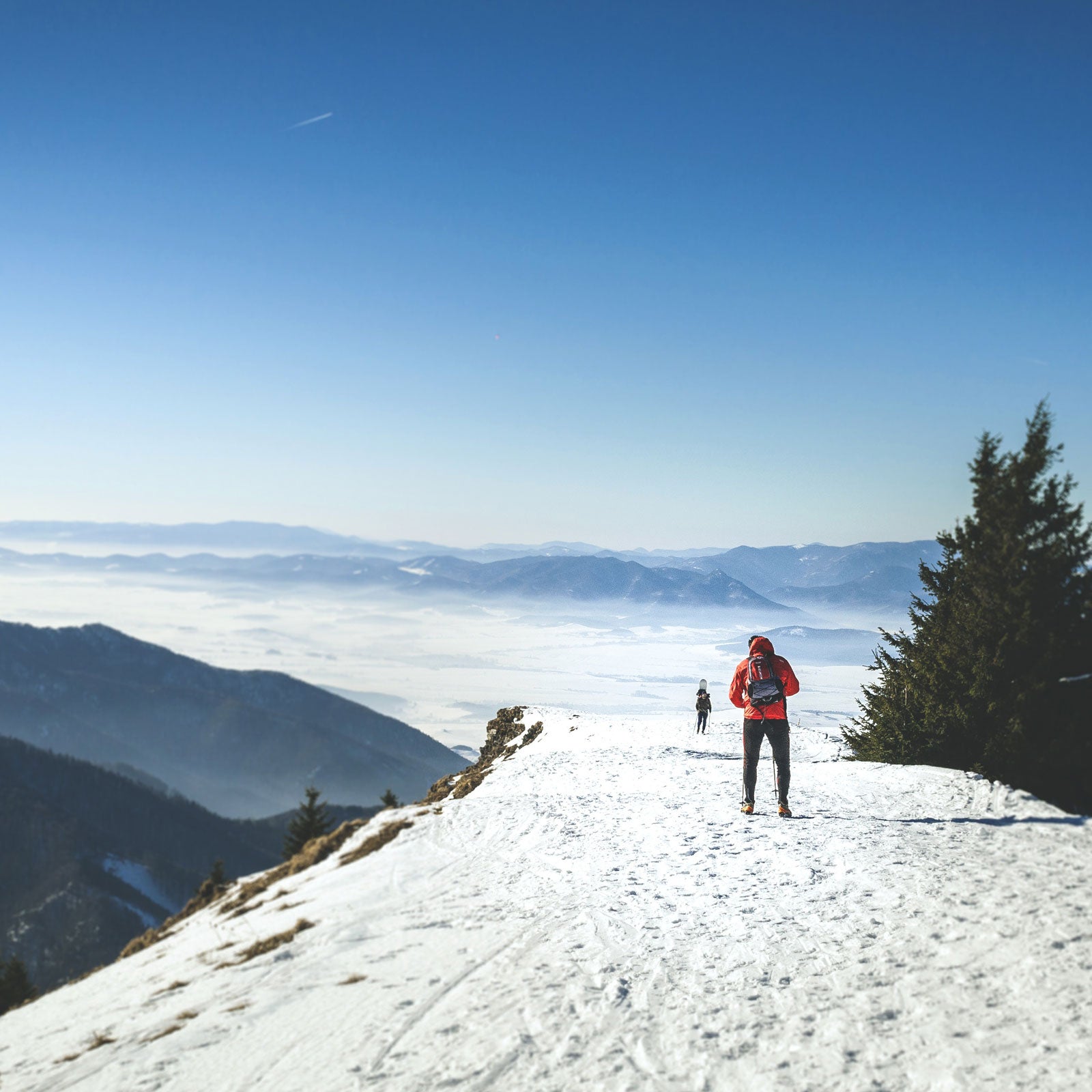There are few experiences better than summiting your first fourteenerÔÇöthe crisp mountain air, the feeling of being above it all, and the inevitable (and hopefully minor) mishaps that will╠řbe recounted at dinner tables and around campfires for years to come. But to keep the ending happy, you need to do your research first to prevent a miserable trip╠řor even injury. HereÔÇÖs what you should consider before attempting your first high-altitude hike.
The Risks
Three things usually get people into trouble: the╠řaltitude, spotty communication, and heightened sun exposure. Even if you live at high elevation, hiking up to 14,000 feet is no cakewalk, and the risk is even greater if youÔÇÖre coming from sea level.╠řYour body will need time to adjust so you donÔÇÖt get altitude sickness (more on that below). And youÔÇÖll most likely be out of cell-service range on your hike, so if something happens on the mountain, youÔÇÖll have to figure out a way to contact help. ItÔÇÖs a good idea to travel with a group, but at least let several friends and family members know where youÔÇÖre headed, your route, and how long you plan to be out. Lastly, since youÔÇÖll be closer to the sun, prepare your skin for extra exposure with proper clothing and sunscreen, and donÔÇÖt forget to protect your eyes with UV-blocking sunglasses.
How to Acclimate╠řProperly
The higher you go, the thinner the air gets as oxygen levels decrease, which means there's less oxygen╠řflowing through your blood to your organs and muscles. This can result╠řin headaches, nausea, shortness of breath, and an inability to exercise like normal. According to a 1999 Princeton University╠řstudy, ╠řof altitude sickness╠řat elevations over 10,000 feet. In the same study, researchers found that symptoms usually start between 12 to╠ř24 hours after arrival at╠řaltitude and begin to decrease in severity by about the third day. ItÔÇÖs important to note that no matter how much you prepare, you can still fall ill with altitude sicknessÔÇöbeing physically fit does not make you immune.
If you experience any of the╠řsymptoms, descend to camp or hang out at a lower altitude╠řuntil your body is better able to╠řacclimate. If you choose to ignore the symptoms and climb higher, you could experience some more acuteÔÇöand potentially fatalÔÇöforms of altitude sickness like pulmonary edema╠ř(fluid in the lungs) or cerebral edema (fluid in the brain).╠ř, listen to your gut and head down╠řif something starts to feel off. The mountain isnÔÇÖt going anywhere.
The Right Way to Pack
Weather conditions can change in a heartbeat at high altitude, and mountains can sometimes see all four seasons in a single day. HereÔÇÖs what you should bring for a day hike at elevation.
Clothing
- : A good base-layer set╠řwill help pull moisture away from your body so youÔÇÖll stay warm longer. Those made of wool or synthetics╠řwill wick faster than cotton or other materials.╠ř
- : Most hiking pants are designed with╠řa layer of DWR╠řto help repel light rain and snow╠řand╠řtargeted gussets to help with your range of motion.
- : If it really starts to pour, bust out a pair of lightweight rainpants. They wonÔÇÖt take up much room in your pack but will save you in an afternoon storm, and most slip over existing pants.
- : Other than protecting you from the rain, a jacket with Gore-Tex will breathe better than a laminate rainjacket and will prevent you from overheating.
- : If you do get wet from sweat or rain, a synthetic╠řshirt will vent moisture so you donÔÇÖt hike around in a wet top╠řall day.
- : These are lightweight, wonÔÇÖt take up much room in your pack, and are easy to throw on for extra warmth.╠ř
- : Since you lose the most heat through your head, a beanie is a must if thereÔÇÖs a chance the mercury could drop.
- : This lightweight fabric tube╠řcan be used as a hat, a balaclava, a headband, or even a hair tie.╠ř
- : If it gets really cold, layer a puffy under your Gore-Tex rainjacket to hold in heat.
Footwear
- : YouÔÇÖll need a pair of well-broken-in shoes to be comfortable for miles. Some people like wearing trail runners because theyÔÇÖre more lightweight and often have more cushioning. But some folks prefer the stability and support provided by a traditional pair of hiking boots. The best choice is╠řwhat works for you.
- : Wool╠řadjusts rapidly to your body temperature and╠řdries╠řquickly. We recommend taking two pairs with you in case your feet get wet and you need to change.╠ř
- : When the trail turns muddy or snowy, these will keep the elements out of your boots.
Gear
- : Having a pack with at least 20 liters of capacity to hold all╠řyour gear is safe. But if youÔÇÖll be out a long time, size up. If you prefer carrying trekking poles, look for a pack with external carrying loops.
- : If it starts raining or snowing, this will protect the contents of your pack and weighs next to nothing.
- : Some might consider these optional, but trekking poles will help save your knees on a╠řdescent. Some trekking poles fold down incredibly small and will easily fit inside your pack or can be strapped to the outside.
- : It is incredibly easy to build your own first-aid kit, but buying one will ensure everything you need is there.╠ř
- : You might be hiking in the early morning or at night, so youÔÇÖll want to have a reliable light source. And be sure to bring extra batteries.
- : Light reflects off of snow, and itÔÇÖs easy to damage your eyes at altitude. Invest in a pair that blocks 100 percent of harmful UV raysÔÇömost sunglasses available these days will, but double-check for safety.
- : You could use water bottles, but theyÔÇÖre unwieldy and take up valuable pack space. We prefer hydration reservoirs╠řbecause they hold a large quantity.
- ╠řand : Higher altitudes expose you to stronger sun, so even if itÔÇÖs cold, you still need to apply sunscreen. And donÔÇÖt forget about your lips.
- : YouÔÇÖll most likely be out of cell-phone range, so itÔÇÖs a good measure to have a GPS communicator on you to call for help.
- A map and╠ř: Paper maps still have a time and place. Know where youÔÇÖre going, and learn how to orient yourself just in case.
Food and Water
- : These are great for afternoon snacks or even meal replacements. More calories equal more energy for summiting and descending.
- ╠řor : If you run out of water, youÔÇÖll need a way of getting more. Tablets are quick to use, but a water filter will provide╠řa larger quantity of water.
- Water: To mitigate your chances of altitude sickness, you should drink at least .


